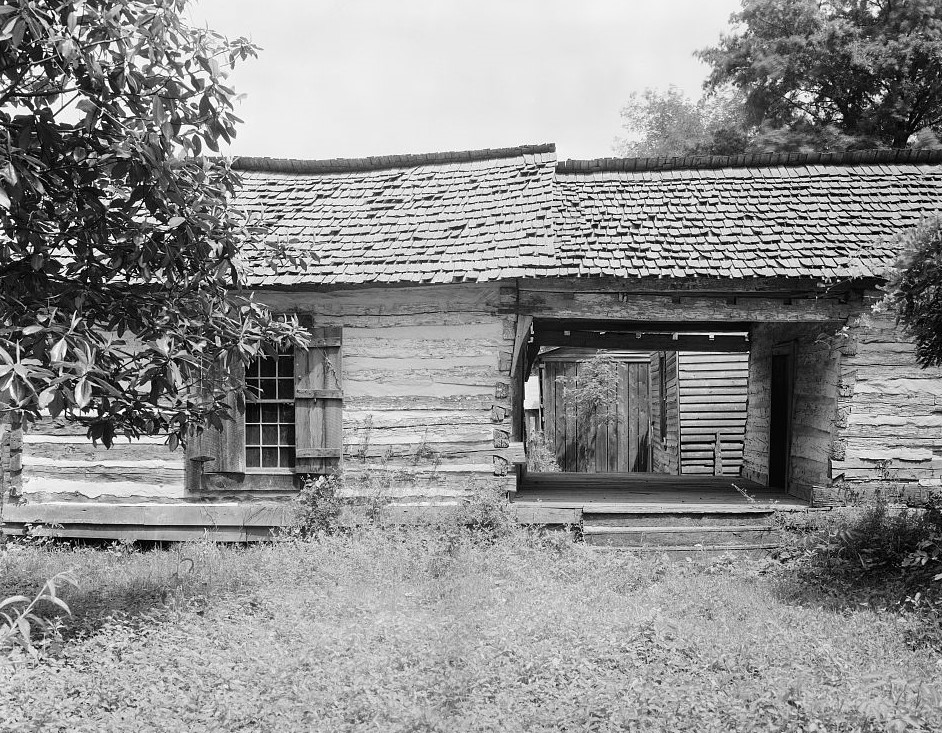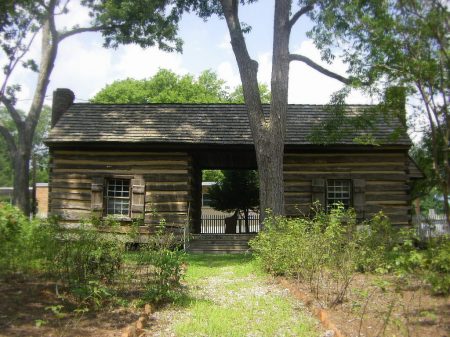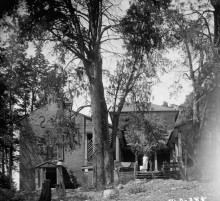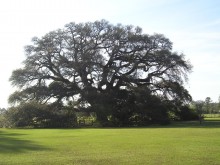This Patron+ story is also in the book Alabama Footprints: Immigrants – A Collection of Lost and Forgotten Stories
First Territorial Governor Lived In A Log Cabin
“Few people of extensive wealth moved into the Alabama region during the period of early settlement. Only the man who needed to better his fortune had an inducement to make the necessary sacrifice. Those who had slaves usually owned but a small number and many who later became planters had no slaves at all to begin with. In other words, the small farmer of the Piedmont region became the pioneer planter of the Southwest.”1
Immigrants from other states usually sold the land they held and retained the proceeds for the purchase of their new homes. Household goods and farm implements were packed on wagons and started out on the rough road to Alabama. If the immigrant owned slaves, they drove the herds of cattle and hogs, while the planter’s family brought up the rear in a carriage.
The journey was long and dangerous. Roads were merely clearings through the forest. Since there were no bridges, small streams were forded and crude ferries were established at the larger ones. Hunting along the way afforded diversions for the men, and the groups of people gathered at night around the campfires to share experiences.
 Typical dogtrot cabin on General Joseph Wheeler’s estate in Lawrence County, Alabama ca. 1939 (Photographer Frances Benjamin Johnston, Library of Congress)
Typical dogtrot cabin on General Joseph Wheeler’s estate in Lawrence County, Alabama ca. 1939 (Photographer Frances Benjamin Johnston, Library of Congress)
Once they reached the new Territory of Alabama, the men set about constructing a log cabin with two rooms built opposite each other and joined by a passage-way. These homes were later known as ‘dog-trot’ cabins.
Chimneys built of stones or clay-daubed sticks were put up at opposite ends of the structure and great open hearths served for both heating and cooking. Sometimes a “lean-to” was attached behind one or both of the rooms, and an attic might be constructed above.
No sawmills were available so floors were made of puncheons, or logs split in halves, with the flat side upward. “The chinks between the logs were filled with clay; the doors and shutters were of crude boards, and the shingles were hand-split. In such a dwelling, the planter who brought his household furnishings could establish a kind of rude comfort, which sufficed even the wealthiest immigrants during the first few years of their sojourn. The first and only governor of Alabama Territory lived in such a log cabin during the years of his administration and until his premature death.”2
All the newcomers were not even this fortunately situated. Squatters, “being improvident by nature, did not come to seek wealth, but merely to gain a subsistence, or to enjoy the freedom of the woods. They built their simple cabins and planted their crops of corn between trees which they killed by circling. Their greatest immediate problem was to live until the first crop was made, and here there was much difficulty.”3
In 1816 and 1817, the flood of immigrants was so great that the Native Americans and scattered pioneers were not able to furnish enough corn to meet the needs of the new-comers. In 1816 corn brought four dollars a bushel along the highway from Huntsville to Tuscaloosa, and so scarce did this article become among the local Natives that the Government had to come to their rescue in 1817 in order to relieve actual distress.
1Abernethy, Thomas Perkins, The Formative Period in Alabama 1815-1828, Issue 6, 1922
2Abernethy, Thomas Perkins, The Formative Period in Alabama 1815-1828, Issue 6, 1922
3Abernethy, Thomas Perkins, The Formative Period in Alabama 1815-1828, Issue 6, 1922
ALABAMA FOOTPRINTS Immigrants: Lost & Forgotten Stories (Volume 5)
ALABAMA FOOTPRINTS Immigrants includes some lost & forgotten stories of their experiences such as:
- The Birth of Twickenham
- Captain Slick – Fact or Fiction
- Vine & Olive Company
- The Death of Stooka
- President Monroe’s Surprise Visit To Huntsville
ALABAMA FOOTPRINTS Immigrants: Lost & Forgotten Stories (Volume 5)





